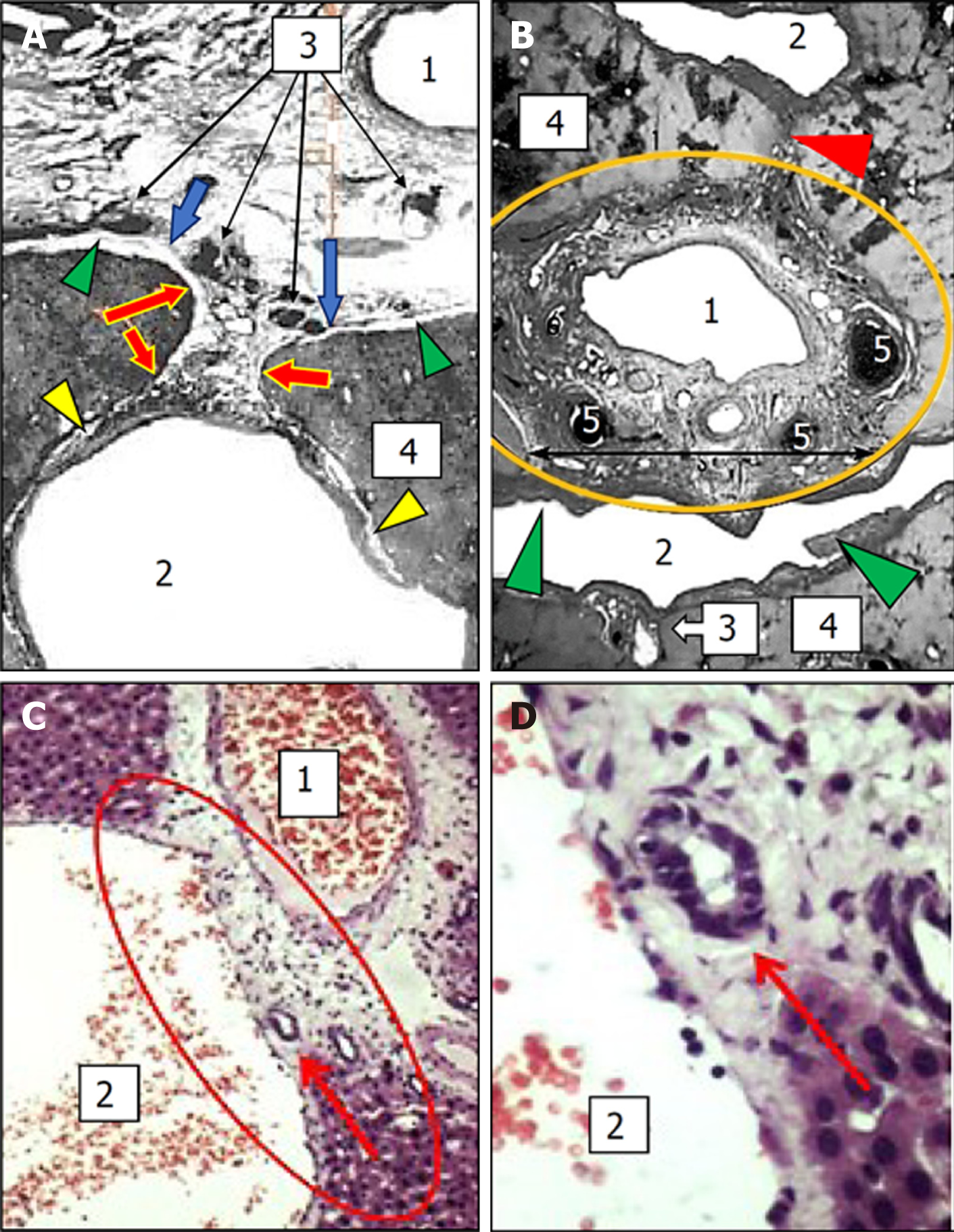Copyright
©The Author(s) 2021.
World J Hepatol. Nov 27, 2021; 13(11): 1484-1493
Published online Nov 27, 2021. doi: 10.4254/wjh.v13.i11.1484
Published online Nov 27, 2021. doi: 10.4254/wjh.v13.i11.1484
Figure 2 Porta-caval fibrous connections in humans and animals.
A: Plate-shaped porta-caval fibrous connection (PCFC) (histotopogram of liver tissue): 1: Lumen of the portal vein; 2: Lumen of hepatic vein tributary; 3: Bile ducts and biliary glands (filled with Indian ink); 4: Liver parenchyma; Rad arrow: Proper hepatic capsule (PHC); Blue arrow: Perivascular fibrous capsule (Glisson’s capsule); Green arrowhead: Fissure among the PHC and Glisson’s capsule; Yellow arrowhead: Fissure among the PHC and perivenous connective-tissue sheath (preparation from the private archive of Professor Chanukvadze I); B: PCFCs (histotopogram of liver tissue): Large portal tract is surrounded by a yellow ellipse; 1: Lumen of the portal vein; 2: Lumen of hepatic vein tributaries; 3: Small portal tract; 4: Liver parenchyma; 5: Bile ducts (filled with Indian ink); Green arrowhead: The area of complete fusion; Red arrowhead: Thread-shaped PCFC (preparation from the private archive of Professor Ilya Chanukvadze); C: PCFC in rat liver (surrounded by a red ellipse). 1: Lumen of the portal vein; 2: Lumen of a hepatic vein; Red arrow: Bile ductule abutted to hepatic vein connective tissue sheath (preparation from the private archive of Professor Dimitri Kordzaia). Hematoxylin-eosin, Ob × 10, Oc × 10; D: Fragment of Figure C. Hematoxylin-eosin, Ob × 40, Oc × 10. C and D: Citation: Kordzaia D, Jangavadze M. Unknown bile ductuli accompanying hepatic vein tributaries (experimental study). Georgian Med News 2014: 121-129. Copyright ©Georgian Medical News 2014. Published by Georgian Medical News[43].
- Citation: Patarashvili L, Gvidiani S, Azmaipharashvili E, Tsomaia K, Sareli M, Kordzaia D, Chanukvadze I. Porta-caval fibrous connections — the lesser-known structure of intrahepatic connective-tissue framework: A unified view of liver extracellular matrix. World J Hepatol 2021; 13(11): 1484-1493
- URL: https://www.wjgnet.com/1948-5182/full/v13/i11/1484.htm
- DOI: https://dx.doi.org/10.4254/wjh.v13.i11.1484









